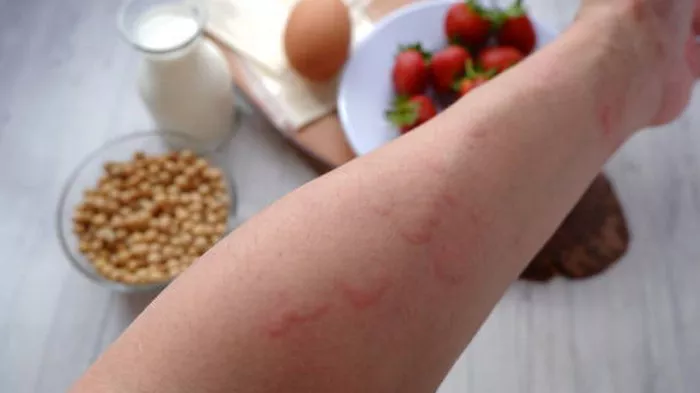Scabies is a highly contagious skin condition caused by the mite Sarcoptes scabiei. Recognizing the first symptoms of scabies is crucial for early diagnosis and treatment, which can prevent the spread of the infestation and alleviate discomfort. In this comprehensive article, we will explore in detail the initial manifestations of scabies.
Introduction to Scabies
Scabies is an itchy skin condition that results from an infestation of the human itch mite. These mites are so small that they are barely visible to the naked eye. The female mite burrows into the top layer of the human skin to lay her eggs, and it is this burrowing and the body’s subsequent reaction to the mites, their eggs, and feces that cause the symptoms. Scabies spreads through close, prolonged skin – to – skin contact with an infected person, and it can also be transmitted through contact with infested clothing, bedding, or furniture.
1. Itching
When It Starts:The first symptom of scabies is often itching, which usually begins within 2 – 6 weeks after initial contact with the mites. However, in some cases, it can start as early as 1 – 4 days, especially in people who have had a previous scabies infestation. The reason for this variation in the onset time is related to the body’s immune response. Those with a previous exposure may have a more rapid immune reaction, leading to quicker symptom development.
Intensity of Itching:The itching associated with scabies can be extremely intense. It is often described as a persistent, maddening sensation that can be difficult to ignore. The intensity of the itching may vary from person to person, but it is generally more severe than that caused by common skin irritations. It tends to be worse at night, which can significantly disrupt sleep patterns. This nocturnal exacerbation of itching is thought to be due to several factors. One theory is that the body’s natural decrease in cortisol levels at night reduces the anti – inflammatory effect, making the itching more pronounced. Additionally, the warmth of the bed may increase the activity of the mites, and the lack of distractions during sleep makes the itching more noticeable.
Location of Itching
Common Areas:The itching typically first appears in areas where the mites are most likely to burrow. These include the webs of the fingers, the sides of the fingers, the wrists, the elbows, the armpits, the waist, the buttocks, the nipples in women, and the genital area in both men and women. The skin in these areas is relatively thin and warm, providing an ideal environment for the mites. The itching in these regions can be so intense that it may cause the person to scratch vigorously, which can lead to further skin damage.
Less Common but Possible Areas:In some cases, the itching may also be present on the feet, especially between the toes, the ankles, the knees, the shoulders, and the back. This can be more common in severe infestations or when the mites have spread from their initial sites. The distribution of itching can give clues to the healthcare provider about the possible presence of scabies, especially when combined with other symptoms.
2. Skin Lesions
Appearance and Identification:Burrows are one of the most characteristic early signs of scabies. These are thin, wavy, grayish – white or skin – colored lines on the skin. They are usually a few millimeters to a centimeter long, although they can sometimes be longer. The burrows are created by the female mite as she tunnels through the stratum corneum, the outermost layer of the skin. They can be difficult to see with the naked eye, especially in people with darker skin tones. A magnifying glass or a dermatoscope can be helpful in identifying them. The burrows are often found in the same areas as the itching, such as the hands and wrists. In the webs of the fingers, the burrows may be more visible as the skin is stretched in these areas.
Significance of Burrows:The presence of burrows is a strong indication of scabies. However, it’s important to note that not all burrows will necessarily contain mites. Sometimes, the mites may have moved on, but the tunnel remains. Burrows are also sometimes mistaken for other skin markings, such as scratches or fine lines from clothing. But when combined with other symptoms like itching, they are a key diagnostic feature.
3. Papules and Vesicles
Papules:Papules are small, raised bumps on the skin that are often one of the first visible signs of scabies. They are usually red or pink in color and can be itchy. These papules are a result of the body’s immune response to the mites and their products. They can range in size from a few tenths of a millimeter to a few millimeters in diameter. Papules are commonly found in areas where the mites are active, such as around the burrows. In some cases, they may be more numerous in areas with a higher density of nerve endings, like the hands and feet, as the body’s immune reaction is more pronounced in these sensitive areas.
Conclusion
In conclusion, recognizing the first symptoms of scabies is essential for timely diagnosis and treatment. The combination of intense itching, the appearance of burrows, papules, and vesicles in specific areas, along with the psychological and social impact, can provide valuable clues. Differentiating scabies from other similar skin conditions is important to ensure the correct treatment approach. Early treatment not only relieves the discomfort of the affected individual but also prevents the spread of the infestation and potential complications, safeguarding the health of the community.
Related Topics:

